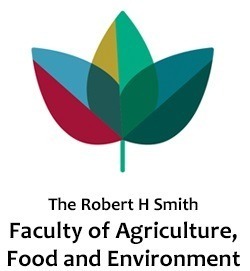Grunwald, Y. ; Gosa, S. C. ; Torne-Srivastava, T. ; Moran, N. ; Moshelion, M. .
Out Of The Blue: Phototropins Of The Leaf Vascular Bundle Sheath Mediate The Regulation Of Leaf Hydraulic Conductance By Blue Light.
Plant Cell 2022, koac089.
Publisher's VersionAbstractThe Arabidopsis (Arabidopsis thaliana) leaf veins bundle-sheath cells (BSCs)—a selective barrier to water and solutes entering the mesophyll—increase the leaf radial hydraulic conductance (Kleaf) by acidifying the xylem sap by their plasma membrane H+-ATPase, AHA2. Based on this and on the BSCs’ expression of phototropins PHOT1 and PHOT2, and the known blue light (BL)-induced Kleaf increase, we hypothesized that, resembling the guard cells, BL perception by the BSCs’ phots activates its H+-ATPase, which, consequently, upregulates Kleaf. Indeed, under BL, the Kleaf of the knockout mutant lines phot1-5, phot2-1, phot1-5 phot2-1, and aha2-4 was lower than that of the wild-type (WT). BSC-only-directed complementation of phot1-5 or aha2-4 by PHOT1 or AHA2, respectively, restored the BL-induced Kleaf increase. BSC-specific silencing of PHOT1 or PHOT2 prevented such Kleaf increase. A xylem-fed kinase inhibitor (tyrphostin 9) replicated this also in WT plants. White light—ineffective in the phot1-5 mutant—acidified the xylem sap (relative to darkness) in WT and in the PHOT1-complemented phot1-5. These results, supported by BL increase of BSC protoplasts’ water permeability and cytosolic pH and their hyperpolarization by BL, identify the BSCs as a second phot-controlled water conductance element in leaves, in series with stomatal conductance. Through both, BL regulates the leaf water balance.
Gosa, S. C. ; Koch, A. ; Shenhar, I. ; Hirschberg, J. ; Zamir, D. ; Moshelion, M. .
The Potential Of Dynamic Physiological Traits In Young Tomato Plants To Predict Field-Yield Performance.
2022,
315, 111122.
Publisher's VersionAbstractTo address the challenge of predicting tomato yields in the field, we used whole-plant functional phenotyping to evaluate water relations under well-irrigated and drought conditions. The genotypes tested are known to exhibit variability in their yields in wet and dry fields. The examined lines included two lines with recessive mutations that affect carotenoid biosynthesis, zeta z2083 and tangerine t3406, both isogenic to the processing tomato variety M82. The two mutant lines were reciprocally grafted onto M82, and multiple physiological characteristics were measured continuously, before, during and after drought treatment in the greenhouse. A comparative analysis of greenhouse and field yields showed that the whole-canopy stomatal conductance (gsc) in the morning and cumulative transpiration (CT) were strongly correlated with field measurements of total yield (TY: r2 = 0.9 and 0.77, respectively) and plant vegetative weight (PW: r2 = 0.6 and 0.94, respectively). Furthermore, the minimum CT during drought and the rate of recovery when irrigation was resumed were both found to predict resilience.

